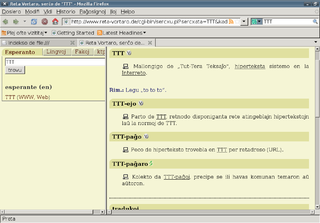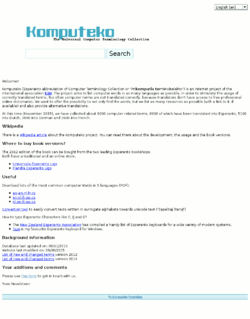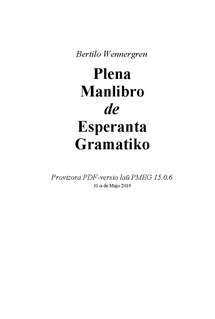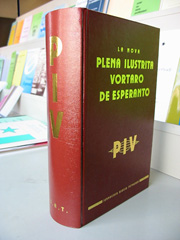Gender asymmetry is an aspect of the constructed international auxiliary language Esperanto which has been challenged by numerous proposals seeking to regularize both grammatical and lexical gender.

The Esperanto Wikipedia is the Esperanto version of Wikipedia, which was started on 11 May 2001, alongside the Basque Wikipedia. With over 318,000 articles as of May 2022, it is the 36th-largest Wikipedia as measured by the number of articles, and the largest Wikipedia in a constructed language.
Volitive modality is a linguistic modality that indicates the desires, wishes or fears of the speaker. It is classified as a subcategory of deontic modality.

Gaston Waringhien was a French linguist, lexicographer, and Esperantist. He wrote poems as well as essays and books on linguistics. He was chairman of the Akademio de Esperanto.
Kai is a conjunction in Greek, Coptic and Esperanto.
Montagu Christie Butler was a British academic, librarian, lexicographer, musician, and Esperantist. A winner of several prizes at the Royal Academy of Music in London, he was a harpist and a versatile music teacher skilled in playing various musical instruments, as well as a teacher of voice and of musical composition.
Like natural languages, the constructed language Esperanto contains profane words and indecent vocabulary. Some of this was formulated out of the established core vocabulary, or by giving specific profane or indecent senses to regularly formed Esperanto words. Other instances represent informal neologisms that remain technically outside the defined vocabulary of the language, but have become established by usage.

Michel Duc Goninaz was a French Esperantist known worldwide for his 2002 revision of La Plena Ilustrita Vortaro de Esperanto.

The Vortaro de Esperanto, published by Kazimierz Bein in 1911, was the first monolingual dictionary ever published in Esperanto.
Plena Vortaro de Esperanto is a monolingual dictionary of the Esperanto language first published by the Sennacieca Asocio Tutmonda (SAT) in 1930, largely considered the first truly comprehensive dictionary written entirely in Esperanto.

E@I ("Education@Internet") is an international youth non-profit organization that hosts educational projects and meetings to support intercultural learning and the usage of languages and internet technologies.

The Esperantist of the Year is an honorary designation bestowed each year by the editors of the Esperanto-language monthly La Ondo de Esperanto. The award recipient is selected by an international jury led by Halina Gorecka, the Russian publisher of the magazine.
Hans Michael Maitzen is an Austrian astronomer.

Reta Vortaro is a general-purpose multilingual Esperanto dictionary for the Internet. Each of the dictionary's headwords is defined in Esperanto, along with additional information, such as example sentences, to help distinguish the subtle shades of meaning that each particular word form may have.

Komputeko is an online project of the non-profit youth organization E@I (“Education@Internet”) with the goal of bringing together parallel computer terminology from various dictionaries in order to facilitate access to and comparison between different translations and thus promote exact use of language and counteract the usage of linguistic borrowings from American English. Komputeko is short for the Esperanto noun phrase "Prikomputila terminokolekto", meaning "collection of computer terms". The dictionary is written in five languages, and there are plans to expand it into other languages. A preliminary version with a few other languages already exists.
Claus Killing-Günkel, in Esperanto also known as Nikolao Günkel, is a German teacher and interlinguist.
The Tekstaro de Esperanto is a text corpus of the Esperanto language, a large collection of very diverse texts for linguistic research on Esperanto. As of January 2019, the corpus has texts with a total of 5,177,208 words.

Plena Manlibro de Esperanta Gramatiko is a book which explains Esperanto grammar in an easy-to-learn format. It was mostly written by Bertilo Wennergren and is for ordinary Esperanto speakers who want to study Esperanto's grammar, word construction, writing and pronunciation.

The following outline is provided as an overview of and topical guide to Esperanto:











